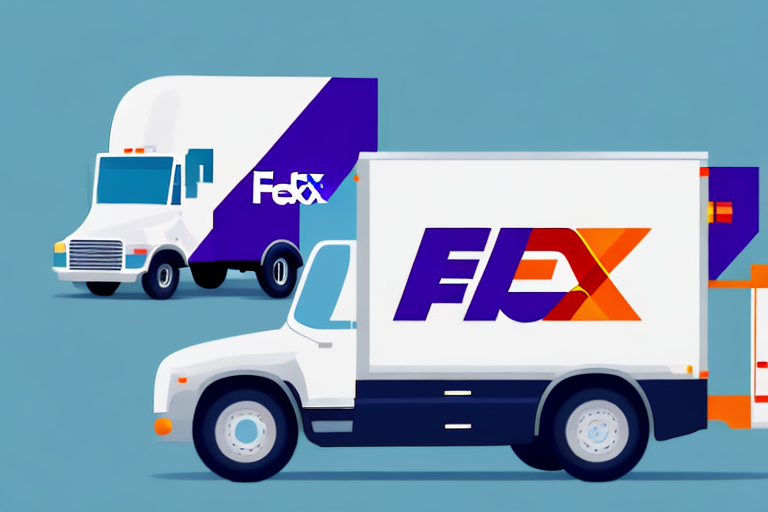Understanding the Impact of the FedEx Price Increase
FedEx, one of the largest shipping carriers in the world, recently announced a price increase, affecting millions of its customers. The price hike results from rising operational costs that FedEx has been grappling with. This article delves into the reasons behind the price increase, its effects on businesses and consumers, explores alternative shipping options, strategies to mitigate the impact, and examines the future of shipping in light of this development.
Reasons Behind FedEx's Price Increase
Rising Operational Costs
FedEx has cited several factors contributing to the price increase, primarily the escalating operational costs. These include:
- Fuel Costs: Fluctuating fuel prices have a direct impact on shipping costs, leading to higher fuel surcharges.
- Labor Expenses: Increased wages and benefits for personnel are essential to maintain a reliable workforce.
- Technological Investments: Significant investments in technology advancements and automation aim to enhance efficiency and service quality.
- Infrastructure Expansion: Opening new facilities to accommodate growing demand and improve logistics capabilities.
Impact of the COVID-19 Pandemic
The COVID-19 pandemic has reshaped the shipping industry, resulting in:
- Increased Demand: A surge in e-commerce has led to higher volumes of packages needing delivery.
- Supply Chain Disruptions: Delays and shortages have increased operational challenges and costs.
These factors combined have necessitated the price adjustments to ensure FedEx's long-term sustainability and competitive edge in the market.
Impact on Businesses and Consumers
Effects on Small Businesses
Small business owners are particularly vulnerable to the FedEx price hike due to their reliance on shipping for product delivery. The increased costs may lead to:
- Higher Prices for Customers: Businesses might pass on the shipping costs to consumers, potentially reducing competitiveness.
- Reduced Profit Margins: Absorbing additional costs can significantly impact the already tight margins of small businesses.
- Exploration of Alternatives: Businesses may need to consider other carriers or invest in their own delivery infrastructure.
Consumer Reactions
Consumers have shown mixed reactions to the price increase:
- Increased Shipping Costs: Higher shipping fees may deter online shopping or push consumers towards alternative retailers.
- Shift in Provider Preference: Some consumers might switch to other carriers like UPS or DHL if they offer more competitive rates.
Overall, the price hike could influence consumer behavior and market dynamics within the shipping industry.
Alternative Shipping Options
Exploring Other Carriers
Businesses facing higher costs with FedEx can consider alternative shipping carriers such as:
- UPS: Known for reliable services and competitive pricing.
- DHL: Offers extensive international shipping options.
- USPS: Provides cost-effective solutions for smaller shipments.
- Regional Carriers: Localized services like LaserShip may offer tailored solutions.
Utilizing Freight Brokers
Freight brokers act as intermediaries between businesses and carriers, helping to:
- Negotiate Better Rates: Leverage volume to secure discounted shipping rates.
- Manage Logistics: Handle the complexities of shipping logistics, allowing businesses to focus on core operations.
While freight brokers can offer cost savings, it's essential to vet their reliability and reputation before engagement.
Strategies to Mitigate the Price Increase
Optimizing Shipping Practices
Businesses can implement several strategies to reduce the impact of higher shipping costs:
- Evaluate Shipping Needs: Opt for less expensive services for non-urgent shipments.
- Consolidate Shipments: Bundle multiple orders to achieve volume discounts.
- Streamline Packaging: Use efficient packaging to reduce weight and dimensional costs.
Negotiating with Carriers
Negotiation can play a crucial role in managing shipping expenses:
- Remove Unnecessary Add-Ons: Eliminate services like Saturday delivery if they aren't essential.
- Request Volume Discounts: Leverage high shipping volumes to secure better rates.
- Engage Regional Account Managers: Dedicated managers can offer customized rate solutions.
Communicating with Customers
Transparency with customers regarding shipping changes can help maintain trust:
- Update Shipping Policies: Clearly reflect any changes on the business website.
- Send Notifications: Inform customers via email about upcoming changes and reasons.
- Offer Alternative Solutions: Provide options like in-store pickup to offset shipping costs.
Future Outlook for Shipping Costs
Trends Influencing Shipping Expenses
Several trends are shaping the future of shipping costs:
- E-commerce Growth: The continuous rise in online shopping drives demand for efficient shipping solutions.
- Technological Advancements: Investments in automation and robotics aim to reduce operational costs over time.
- Sustainability Initiatives: Efforts to minimize environmental impact may influence shipping practices and costs.
Forecasting Shipping Costs
Experts predict that shipping costs may continue to fluctuate due to:
- Economic Factors: Inflation and global economic conditions can affect fuel prices and labor costs.
- Regulatory Changes: New government regulations on sustainability and transportation could impact operating expenses.
- Competitive Pressures: As major carriers adjust prices, others may follow suit, creating a ripple effect in the industry.
Conclusion
FedEx's recent price increase is a significant development in the shipping industry, impacting both businesses and consumers. By understanding the reasons behind the hike, assessing its effects, exploring alternative shipping options, and implementing strategic measures, businesses can navigate the challenges posed by rising shipping costs. Staying informed about industry trends and maintaining open communication with customers will be crucial for sustaining growth and competitiveness in this evolving landscape.




















